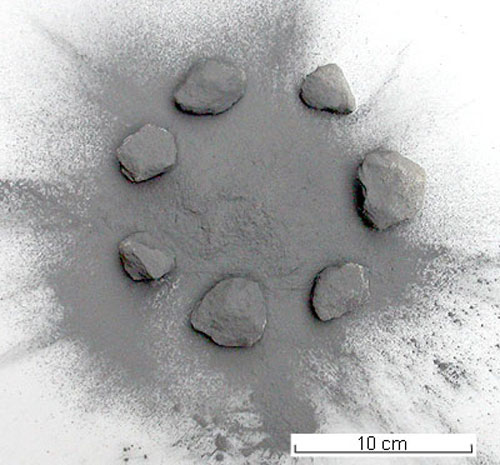| Biological characterization using protein crystal measurements | https://bioprocessintl.com/analytical/product-characterization/biological-characterization-using-protein-crystal-measurements/ |
| A lipase-independent pathway of lipid release and immune modulation by adipocytes | https://science.sciencemag.org/content/363/6430/989 |
| Application of a novel new multispectral nanoparticle tracking technique | https://iopscience.iop.org/article/10.1088/1361-6501/aab940/meta |
| Biophysical characterization of polydisperse liposomal adjuvant formulations | https://doi.org/10.1016/j.bbrc.2020.05.156 |
| Characterisation of particles in solution – a perspective on light scattering and comparative technologies | https://doi.org/10.1080/14686996.2018.1517587 |
| Cyclodextrin Reduces Intravenous Toxicity of a Model Compound | https://doi.org/10.1016/j.xphs.2019.01.004 |
| Development and anti-Candida evaluation of the vaginal delivery system of ... nanosuspension-loaded thermogel | https://doi.org/10.1080/1061186X.2018.1434660 |
| Electrochemical sensor based on F,N-doped carbon dots decorated laccase for detection of catechol | https://doi.org/10.1016/j.jelechem.2019.03.071 |
| Light scattering by pure water and seawater: the depolarization ratio and its variation with salinity | https://doi.org/10.1364/AO.58.000991 |
| Lipid Nanoparticle-Delivered Chemically Modified mRNA Restores Chloride Secretion in Cystic Fibrosis | https://doi.org/10.1016/j.ymthe.2018.05.014 |
| Mesenchymal Stromal Cell Bioreactor for Ex Vivo Reprogramming of Human Immune Cells | https://doi.org/10.1038/s41598-020-67039-w |
| Multifunctional Nanocomposites Based on Liposomes and Layered Double Hydroxides Conjugated with Glycylsarcosine for Efficient Topical Drug Delivery to the Posterior Segment of the Eye | https://doi.org/10.1021/acs.molpharmaceut.8b01136 |
| Particle size analysis of polydisperse liposome formulations with a novel multispectral advanced nanoparticle tracking technology | https://doi.org/10.1016/j.ijpharm.2019.06.013 |
| Review of nanoparticles in ultrapure water: definitions and current metrologies for detection and control | https://www.ovivowater.com/review-of-nanoparticles-in-ultrapure-water-definitions-and-current-metrologies-for-detection-and-control/ |
| Spark erosion as a high-throughput method for producing bimodal nanostructured 316L stainless steel powder | https://doi.org/10.1016/j.powtec.2018.01.012 |
| Synthesis and Characterization of EGFR-Targeted Immunoporphysomes | http://hdl.handle.net/1807/89548 |
| Synthesis of Ultrasmall Synthetic Melanin Nanoparticles by UV Irradiation in Acidic and Neutral Conditions | https://pubs.acs.org/doi/abs/10.1021/acsabm.9b00747 |
| Nanoparticle Tracking Analysis for the Quantification and Size Determination of Extracellular Vesicles | Protocol (jove.com) | https://doi.org/10.3791/62447 |
| Isolation and characterization of EV in Saliva of Children with Asthma | https://evcna.com/article/view/3962 |
| Spinal cord injury alters microRNA and CD81+ exosome levels in plasma extracellular nanoparticles with neuroinflammatory potential | https://doi.org/10.1016/j.bbi.2020.12.007 |
| Skeletal muscle tissue secretes more extracellular vesicles than white adipose tissue and myofibers are a major source ex vivo but not in vivo | https://doi.org/10.1101/2020.09.27.313932 |
| Human milk extracellular vesicle miRNA expression and associations with maternal characteristics in a population-based cohort from the Faroe Islands | https://www.nature.com/articles/s41598-021-84809-2 |
| Purification of Cas9 - RNA Complexes by Ultrafiltration | https://doi.org/10.1002/btpr.3104 |
| Assessment of Surface Glycan Diversity on Extracellular Vesicles by Lectin Microarray and Glycoengineering Strategies for Drug Delivery Applications | https://doi.org/10.1002/smtd.202100785 |
| Bioactive extracellular vesicles from a subset of endothelial progenitor cells rescue retinal ischemia and neurodegeneration | https://doi.org/10.1172/jci.insight.155928 |
| Circulating Extracellular Vesicles From Septic Mice Induce Brain Inflammation via Mirna Cargo | http://hdl.handle.net/10713/19055 |



























